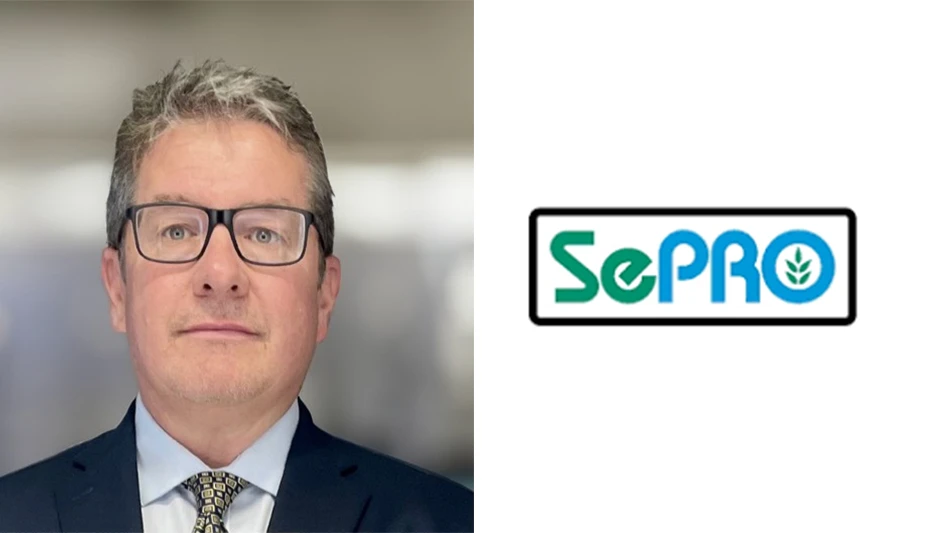
A couple dozen people surround Eric Mabie on the 18th green of one of the country’s more famous golf courses, some with notebooks and pens out, some with cameras snapping photos or shooting video. Everything about the moment feels so ordinary: Mabie squats, holds a Stimpmeter, eases a golf ball down its decline, jots down a number for reference. Then he eases the ball down the decline a second time. Then a third time. And a fourth time.
Everything about the moment is so ordinary, at least at Pinehurst No. 2, where Mabie, a second-generation turf pro, is assistant superintendent.
“What kind of numbers do we have today?” Pinehurst No. 2 superintendent John Jeffreys asks him from the edge of the green.
“Speed is 11.11,” Mabie responds. Rather than stop with speed, though, he continues, “Our trueness is 0.91, and our smoothness is 5.84.”
Bring out a Stimpmeter and speed is expected. But trueness? And smoothness?
All are part of the metrics available to golf courses that introduce the USGA’s GS3 smart golf ball to their maintenance operations. The USGA launched the ball more than a year ago, toting around duffel bags filled with them at the 2022 Carolinas GCSA Conference and Trade Show, and interest and adoption have increased since. The numbers are still low — Pinehurst No. 2 is one of about 50 golf courses that have purchased the technology, which measures more than 15,000 agronomic benchmarking data points to improve greens and retails for about $2,750 — but with more superintendents becoming more interested in Big Data, optimism remains high.
“We’re on the verge of changing the conversation about what constitutes a quality putting green,” says George Waters, senior manager of USGA Green Section education. “The golf world has been focused on speed for a long time. Why? Because that was the only thing you could measure. That was the metric. It became the number. And focusing on that definitely had some problematic elements in terms of playability, cost, sustainability. We knew there was more to putting green quality than just speed, but there wasn’t a way to have that conversation with golfers and decision makers.
“Speed is one part of that equation, but we’re not trying to go faster and faster and faster. Now we can say, Look at how good our roll is. Look at how smooth and firm it is. Those are the things that really impact how the course plays.”

Jeffreys is an early believer in the technology. After more than 17 years at Pinehurst No. 2 — and almost a decade as the course’s superintendent — he will at least try almost anything to help improve the iconic track. He introduced the GS3 on the 13th green, the closest hole to the maintenance facility, and started plugging information uploaded from the ball to the USGA’s Deacon course management system into spreadsheets. (The GS3 includes a year’s subscription to Deacon. Courses that renew after the first year will receive a new GS3 every three years.)
Then he figured out how to use that information.
“You have the number, but how did you get there?” Jeffreys asks rhetorically. “There are a lot of ingredients: Mowing heights, mowing frequency, fertility, topdressing, aerification. We can talk about what we thought we did, but unless we document it and record it, there’s no way we remember. I don’t remember what I had for lunch yesterday much less how much topdressing sand we put out August 15.”
After venting and rolling greens, for example, Jeffreys studied GS3 data and confirmed that the course’s greens were both smoother and faster. “Golfers hated that when we did it,” he says, “but we just made it better, and we had a quantifiable number that showed that was the case. We have numbers now that show the reason we do these things is to make the course better, not to make golfers mad.”
The numbers mean almost nothing, though, unless Jeffreys collects reams of data and shares it with other golf course maintenance teams around the county, the state, the country. He says — with a laugh but not at all joking — that he’d like 50 GS3s just in Moore County, where Pinehurst Resort is located. “We would gladly share this information and find out what’s working,” he says. “And unless others are measuring, we don’t know what’s working. So we can only learn from ourselves right now.”
USGA director of course consulting service Chris Hartwiger says he understands it sounds self-serving for the association to spur every course to purchase a GS3. But he wants every course to collect clippings and measure green speeds and record data, too, because he wants them to be able to make informed agronomic decisions.
“We do a lot of things on putting greens today and we think they’re beneficial and we think they help, but we really don’t know,” Hartwiger says. “What happens with smoothness and trueness first thing in the morning before we put 200 golfers on it? What do we need to do to restore that smoothness and trueness? What is the impact on scoring at the professional level as they change throughout the day? Does it change regardless of grass type?
“By getting golf courses to participate, we’ll begin learning some of those things. I can’t wait to provide superintendents with that information.”

Color forms
The GS3 demo was part of a USGA field day at Pinehurst Resort that also featured discussions about the new Greenkeeper Apprenticeship Program and the resort’s revised (and not uncontroversial) approach to water usage.
Pinehurst used to spotlight its “brilliant green turf all winter,” to use director of golf course maintenance Bob Farren’s words. The maintenance team even painted the turf for a few years. “We’re weaned off of it now,” Farren says, “because we’ve been able to change the culture of expectations. That’s the key.”
The effort started on No. 2, because, as Farren says, “If it’s OK to not overseed No. 2, then it’s OK to not overseed any of it. And that helped. Now golfers are used to firm and fast throughout the winter.”
Beyond just color, “Dryer golf course play better,” says Dr. Cole Thompson, the USGA’s director of turfgrass and environmental research. “They’re truer to the design and you have more fun. If you start to think less about the aesthetic experience than the playing experience, it’s hard to argue against it.”
“The color of this grass doesn’t help me hit a better golf shot,” Hartwiger adds. “But the density of it does. If it’s brown and it’s a good lie, that helps me hit a good golf shot. The color is irrelevant. But sometimes it takes a while to kind of turn that.”
Training day
The Greenkeeper Apprenticeship Program, meanwhile, is a combined effort with the USGA, Sandhills Community College in nearby Southern Pines and area golf courses to recruit, educate and train anyone for a career in the golf course maintenance industry.
The program launched in late 2022 and recently concluded its first class — referred to as a cohort — that started with 20 people. It weaves together both classroom instruction and discussion with practical course work, along with an hourly wage.
“We stay grounded with these students,” says Carson LeTot, a longtime educator who is both the GAP coordinator and a Sandhills CC instructor. “Their classroom is really this golf course and the golf courses around the area. When they come to me, that’s just the icing on the cake. We’re reflecting on what they’re doing out here and what they’re learning from their mentors.
"I don’t really have to do a lot of teaching. Folks like John (Jeffreys) and the rest of the crew and the rest of the superintendents around here, they’re the ones doing the teaching, and then I come in and I fill in with a little theory and a little critical thinking.”
The second cohort starts this month.
Matt LaWell is Golf Course Industry’s managing editor.
Tartan Talks 91

Moving roads to build short-game practice facilities. Par-3 courses at venerable clubs. Bermudagrass in the Mid-Atlantic.
Joel Weiman is observing a transformation among East Coast private clubs. He’s also playing a key role in helping modernize venerable golf land.
After a successful 35-year run guiding design/build efforts for McDonald Design Group and McDonald & Sons, the Maryland-based architect formed Weiman Golf Design in 2023. Weiman’s projects remain close to his East Coast roots. And working at the region’s classic clubs means finding creative ways to fit amenities today’s members seek on fixed acreage.
“We’re much more dynamic now,” Weiman says on the Tartan Talks podcast. “We think outside the box and we’re always pushing the envelope. Take it back to the late ’90s and early 2000s, and it was definitely regimented. Everybody followed the rules. Clubs are now being rewarded when they don’t, and it’s a lot of fun to be a part of.”

From his days studying the profession at Cornell University to the honest conversations an architect must have with superintendents, Weiman’s podcast episode resembles his work: he packs plenty of enduring thoughts into the appearance.
“Right now, I have five jobs in the dirt,” he says, “and I can tell you none of those superintendents give a hooey about the other four. But they need to know I’m their partner, they need to know that I’m all in and they need to know that I’m going to take it as personally as they are. If the superintendent doesn’t succeed, I don’t succeed, either.”
Weiman’s full thoughts can be found on the Superintendent Radio Network page of popular podcast distribution platforms.
COURSE NEWS
Vineyards Country Club wrapped up its South Course redesign and renovation late last year. The 36-year-old Naples, Florida, club addressed aging infrastructure and incorporated new tech with help from QGS Development and Kipp Schulties Design. Key improvements included greens expansion, bunker redesign, and the integration of a technologically advanced irrigation and drainage system. … Bull’s Bridge Golf Club in South Kent, Connecticut, is ready to reveal bunkers renovated during a project guided by Fazio Design and superintendent Stephen Hicks. New bunkers were added to eight holes, along with bentgrass fairway and short-cut approach expansion, and new tees on select holes. McDonald & Sons served as the construction contractor. … Woodmont Country Club in Rockville, Maryland, will host the 2025 and 2026 U.S. Adaptive Opens and the 2028 U.S. Junior Amateur. Elsewhere in the Old Line State, Columbia Country Club in Chevy Chase will host the 2027 U.S. Senior Women’s Amateur and the 2035 U.S. Senior Amateur. … DRC Investors LLC is the new owner of Dismal River Club in Mullen, Nebraska. KemperSports will remain as manager of the club’s operations. … Heritage Golf Group acquired Old Hickory Golf Club, a PB Dye design just outside St. Louis, the 34th addition to its roster since the current ownership and leadership team started in January 2020. … Both Coyote Crossing Golf Club in West Lafayette, Indiana, and The Golf Club at Fox Acres in Red Feather Lakes, Colorado, picked Landscapes Golf Management for operation needs. … Audubon International reported that new certifications across all six of its programs more than doubled in 2023 from the previous two calendar years. Most new certifications were awarded in the golf and lodging categories.
INDUSTRY BUZZ
Aquatrols and the turf division of Precision Laboratories merged to form The Aquatrols Company. The new company will continue to offer the full line of Aquatrols and Precision Laboratories soil surfactants, as well as Precision Laboratories tank mix adjuvants, colorants and additives. … Buffalo Turbine unveiled the Blitz, a stand-on debris blower designed to enhance operational efficiency, reduce labor demands and prioritize operator comfort. … Heavy-duty site prep attachments and forestry accessories manufacturer Fecon LLC acquired Stumper Industries, which manufactures stump grinder attachments for mini and standard skid steers among other products. … FuelPro Trailers introduced its FuelPro 990 for refueling and service. The new trailer has a 990-gallon capacity and includes a five-year tank warranty. … OTR Engineered Solutions introduced its TR-34 tire for farm tractors and ride-on mowers. The new tire is designed to offer improved performance on grass, mud and loose soil, and reduce the risk of turf damage and soil compaction.
WANT MORE?
Enter your email to receive our newsletters.

Explore the February 2024 Issue
Check out more from this issue and find your next story to read.
Latest from Golf Course Industry
- Bloom Golf Partners adds HR expert
- Seeking sustainability in Vietnam
- Kerns featured in Envu root diseases webinar
- Toro continues support of National Mayor’s Challenge for Water Conservation
- A different kind of long distance
- Golf Construction Conversations: Stephen Hope
- EnP welcomes new sales manager
- DLF opening centers in Oregon, Ontario






